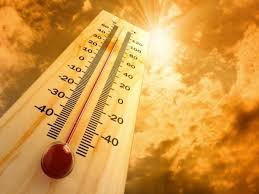
Northern India is bracing for a severe heatwave as summer temperatures arrive earlier than usual this year. According to the India Meteorological Department (IMD), Punjab, Haryana, and Chandigarh have already recorded significantly high temperatures in the first week of April — surpassing last year’s levels.
Chandigarh Meteorological Center Director and senior meteorologist Surendra Pal told ANI, “Last year, this kind of heat was felt after April 15, but this time, the mercury has risen in early April itself.” He warned that while the weather might become slightly pleasant for a short time due to a Western Disturbance, it would not offer lasting relief, and intense heatwaves are likely to follow.
The IMD forecast predicts a rise in temperatures and heatwave to severe heatwave conditions in several northern states, including Punjab, Haryana, Delhi, and regions of Saurashtra and Kutch. On April 9, heatwave to severe heatwave conditions were reported in many areas, and a continuation of these extreme weather patterns is expected on April 15.
Rajasthan may experience partly cloudy skies along with chances of rain, thunderstorms, or dust storms on April 11–12. Haryana could see light rainfall between April 10–11, while Punjab is expected to face cloudy weather with possible rain and dust storms on April 10 and partial cloud cover from April 11–13.
In view of the rising heat, the weather department has issued an advisory urging residents to stay indoors unless necessary, especially during peak sunlight hours. People are advised to stay hydrated, wear loose and light-colored clothing, and protect children and the elderly, who are particularly vulnerable during extreme weather.
The maximum temperature in Punjab on Thursday is expected to hover around 39°C, while the minimum may be about 20°C. On Friday, the mercury is expected to dip slightly, with a high of 33°C and a minimum of 20°C.
Experts warn that this early surge in temperature could be a sign of more intense summer conditions ahead, making precautions essential for public health and safety.
Sources By Agencies


